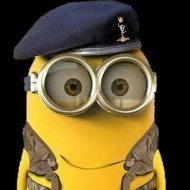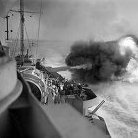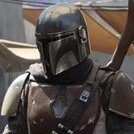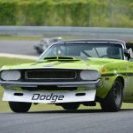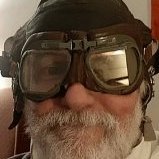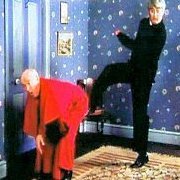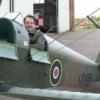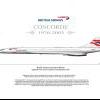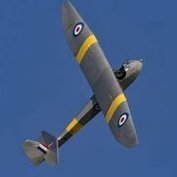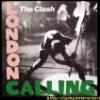@Clashcityrocker, thanks, Nigel
@Keeff, thanks, Keith. This project evolved over time. The original idea had different vehicles and buildings in mind, but as I did more research, and spoke with some directly familiar with what was happening, the overall direction changed, and here we are. I thought the variety of events, people, places and vehicles became very interesting - a fun project.
@Alpha Delta 210, thanks! glad to know that you were able to see the various bits and pieces!
@bootneck, hi Mike, thanks very much! As for the build, sure, and I appreciate your comments and questions. I enjoy trying to get results that are not toylike too! It drives me crazy to put time and effort into something with results that are fine, but clearly look like models in photos and not the real thing! As a general observation, I find taking photos of the final build outdoors goes a long way in achieving the desired effect. This can be a double edged sword, as good things look good - and less good things look a lot less good! But with some practice, they get better.
Regarding my friend Romain's input, that is a longer story. I post on another site too, and he was a regular, and offered comments on several projects. Going beyond the more obvious, like craftsmanship, his bigger critique had more to do with intent, and building/painting/organizing parts/objects in a way that reflect what they actually look like, rather than what I might think they look like. That is, paying close attention to the details in photos, and if need be, for figures, taking a minute to try and physically replicate what you are trying to make a tiny resin guy do! I think this picture sums this up:
Obviously, this is a very close picture, so good and bad shows up 😄 but, I think it illustrates the point - Romain painted this guy and the cat he is petting, and even years later I marvel - this guy even looks good in 1/35 scale.
Regarding the dio itself. I enjoy looking up context images and trying to identify the attributes that make up a place. I don't consider this to be the dio equivalent of "rivet counting", and instead aim more for trying to capture the character of a place. So, I search for lots of photos of the place I am trying to make, like in this compilation:
After you look at many images, you begin to see patterns, colors and textures that look "right" or "wrong" for what you are trying to build - I suppose maybe it is the equivalent of "rivet counting" 😄 But, as I'm not an architectural, cultural, or military historian, I only take this so far, but far enough to have some elements/textures/colors that I want to try and capture/represent.
I enjoy making the buildings and landscape - and usually use a pretty low tech approach. The base is wood frame with a thin plywood sheet, and is 30" (76 cm) x 18" (45 cm).
For this project I used rigid insulating foam for the building and base. This is an interesting product, as it is soft enough to allow you to easily emboss with patterns, like stone, brick, and textures, yet tough enough to require some very messy work when carving and scraping to make landforms.
I use a product called "lightweight spackle compound" for filling in gaps - you can see it above, as it is white. You can find this in hardware stores, as it is intended to be used to fill cracks in walls, and is cheap! The ground plane is coated with several layers of different densities of "pumice gel" - which is something you can find in art stores. This material is not cheap, but the results are pretty nice. It took me a while to develop a technique for applying this stuff, which I suppose feels more or less like sticky sand. I tend to use the medium and coarse textures. There is a fine texture, but it is really fine, and hard to see when applied. The medium and coarse have enough texture to leave shadows, which I think goes a long way toward making a convincing ground plane.
For paint, I sprayed the building and ground plane with a base coat of Vallejo IDF Sand primer, followed by layers of complimentary earth tones. Then, added various washes to punch out details - like the colors and gaps between stones on the walls etc.
Figures....another story - They challenge me too. I give each figure a primer coat - either Vallejo IDF Sand or Tamiya grey, then paint the rest by hand (acrylics), using Vallejo Model Air colors for basic colors (clothing, uniforms, weapons etc) and Scale75 paints for skin colors and tones. As is often said, practice goes a long way toward getting this down. I figured out that painting in faint layers, and gradually building colors up helps too - oh, and did I say, practice helps? I does!! I also give the figures various washes. In this case, bodies received dust coats, and skin, various shades of darker colors in order to try and define eye sockets, noses, and ears with shadows.
Romain though, used enamels and oils! the results are very crisp and convincing 😲
And here you can see - Romain's guys on the top row, and mine on the lower row.
A key difference you can see between our figures is that Romain achieved depth and interest in each, whereas I seem to get the effect sometimes, but not on each, which was not intentional! It turned out that we independently chose different uniform colors, BDUs (battle dress uniforms), and ACUs (Army combat uniforms) - which as it also turns out, is just fine, as in this era, both were being used, and it adds some variety to the scene.
Summing up, look at plenty of reference images, practice, and select an approach that you like and can duplicate - and keep after it 🧐😃
@raider of the lost part, thanks! I'm a strong advocate for outdoor pictures, to the point that I look forward to taking pictures of the final projects 😃 Regarding the sheepsfoot rollers:
My original idea was to use a wheel loader, as I converted a 1/32 scale toy to an armored unit, which looked pretty good - BUT - it looked HUGE - standing alone it was fine, but next to 1/35 scale figures and vehicles, well - not so good. I think this picture might have given me the idea to scratch build the roller! And, yes, these rollers are commonly used to compact graded and filled surfaces, roads and pads.
@Pete in Lincs, thanks, Pete. I enjoy researching projects, and this was no exception. By good fortune I was in touch with a fellow who was doing this work in this setting, so was able to try elevate some authenticity in the project.
Thanks for having a look -
Cheers
Nick


